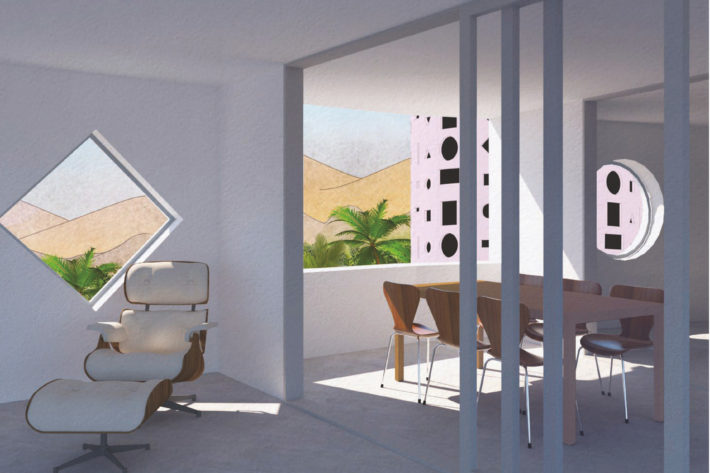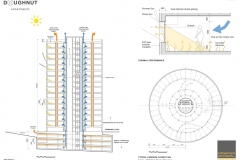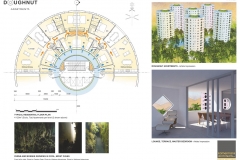Global Future Design Awards 2019
Second Award
Category: House Design (Concept)
Firm: Kamermans Architects Ltd
Architect: Frans Kamermans
Country: New Zealand
Another great opportunity. APR’s next award Urban Design & Architecture Design Awards 2019 is open for Registration. Don’t miss the chance, its a huge platform for architects.
The DOUGHNUT apartments were designed for the Middle East/North Africa region (30° – 32° latitude)
During regular trips to the Middle East we noticed that the modern apartment buildings are commonly designed with substantial glazing facing the sun. This results in potential overheating during the summer months, ‘solved’ with external shutters over the windows and air-conditioning, creating a high energy use indoor environment without natural fresh air or natural light.
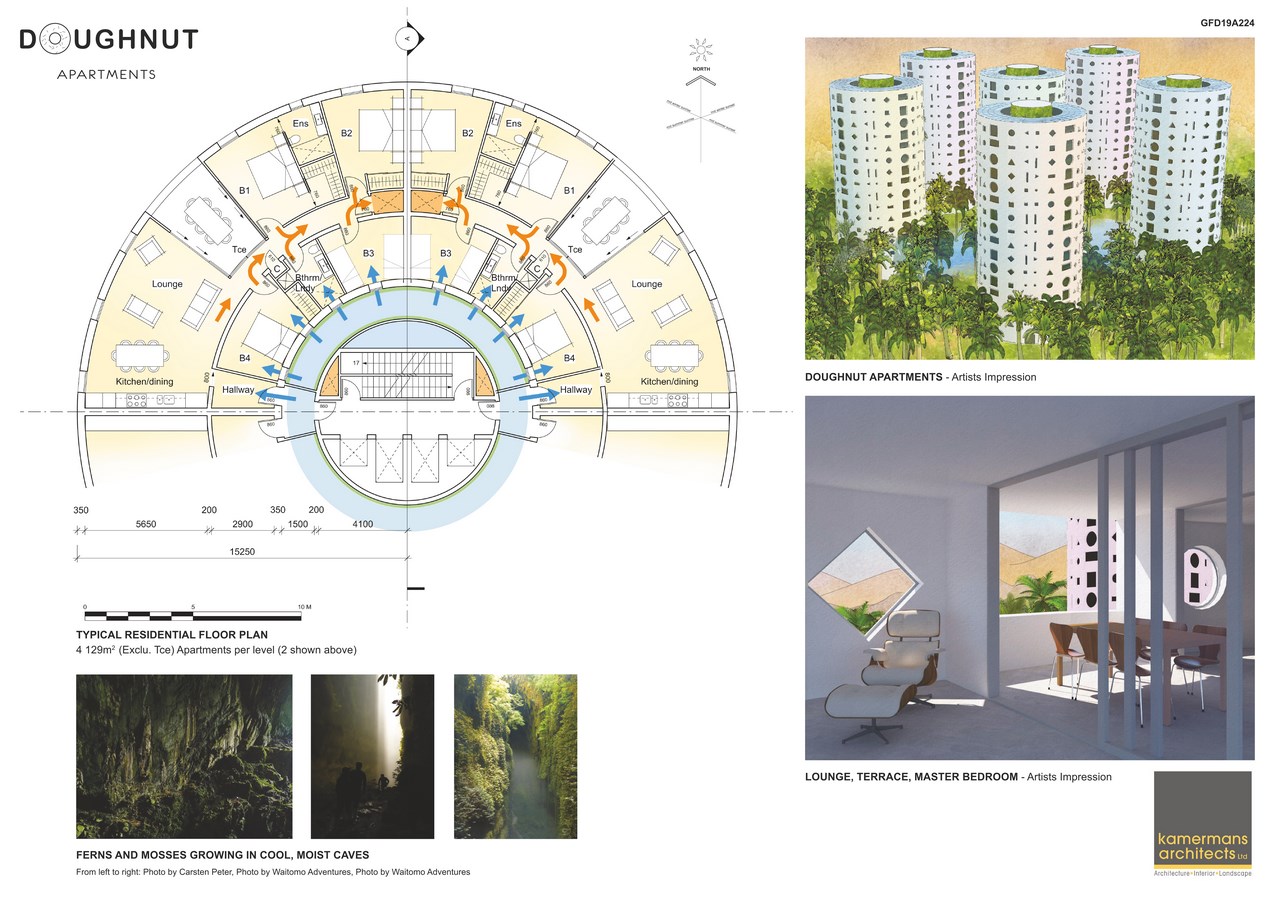
Our more than 30 years experience in Passive Solar Design, creating comfortable living environments that are largely naturally heated and cooled.
The Middle East/North Africa region has a history of ‘courtyard’ houses where the habitable rooms of a house open to a shaded (i.e cool) courtyard. The DOUGHNUT building applies this principle to multi storey apartment buildings where the ‘courtyard’ is the ‘hollow core’ of the doughnut that functions as an ‘above ground’ cave, with a ‘green wall’, from which the apartments draw fresh cool & moist air.
The DOUGHNUT building combines ancient Passive Solar Design principles with advanced technology such as PV panels.
Key Passive Solar Design principles are:
- a) Thermal mass. Each apartment has either NE, NW, SW, or SE sun exposure . The relatively small windows in the thick external walls allow limited solar access while the larger glazed areas at the terraces are set back to
capture the heat from the low winter sun but exclude the high summer sun. - b) Window glazing and sun control. Optimum window sizing and placement control solar access keeping theconcrete structure cool in the summer and warm in the winter. The glazed sliding doors opening to the terraces are set back to be shielded from the high summer sun, providing winter sun access and a good outlook from the lounge and master bedroom.
- c) Natural ventilation.The hollow core of the building acts as a store from which the apartments draw cool their
fresh air. In summer this air naturally ventilates up and out during the night when the outdoor temperatures are lower than the core air but stays in the core during the day when outdoor temperatures are higher. In winter this process reverses, thus assuring fresh cool air the year round. Stale warm air rises through ducts from the This natural ventilation needs to be enhanced by mechanical ventilation powered by the solar PV panels that cover most of the roof. - d) Thermal insulation. The external face of the buildings concrete structure has insulated cladding. The external, non ventilating, relatively small, windows have heat reflective insulating glazing.
The central hollow core is open at roof level thus allowing rain to enter, nurturing shade loving plants. Underground car parking is one, low gradient, continuous spiral parking floor. Warm polluted air naturally rises, mechanically assisted where needed, while cool, fresh air is drawn in from the ‘cool/moist air’ store.
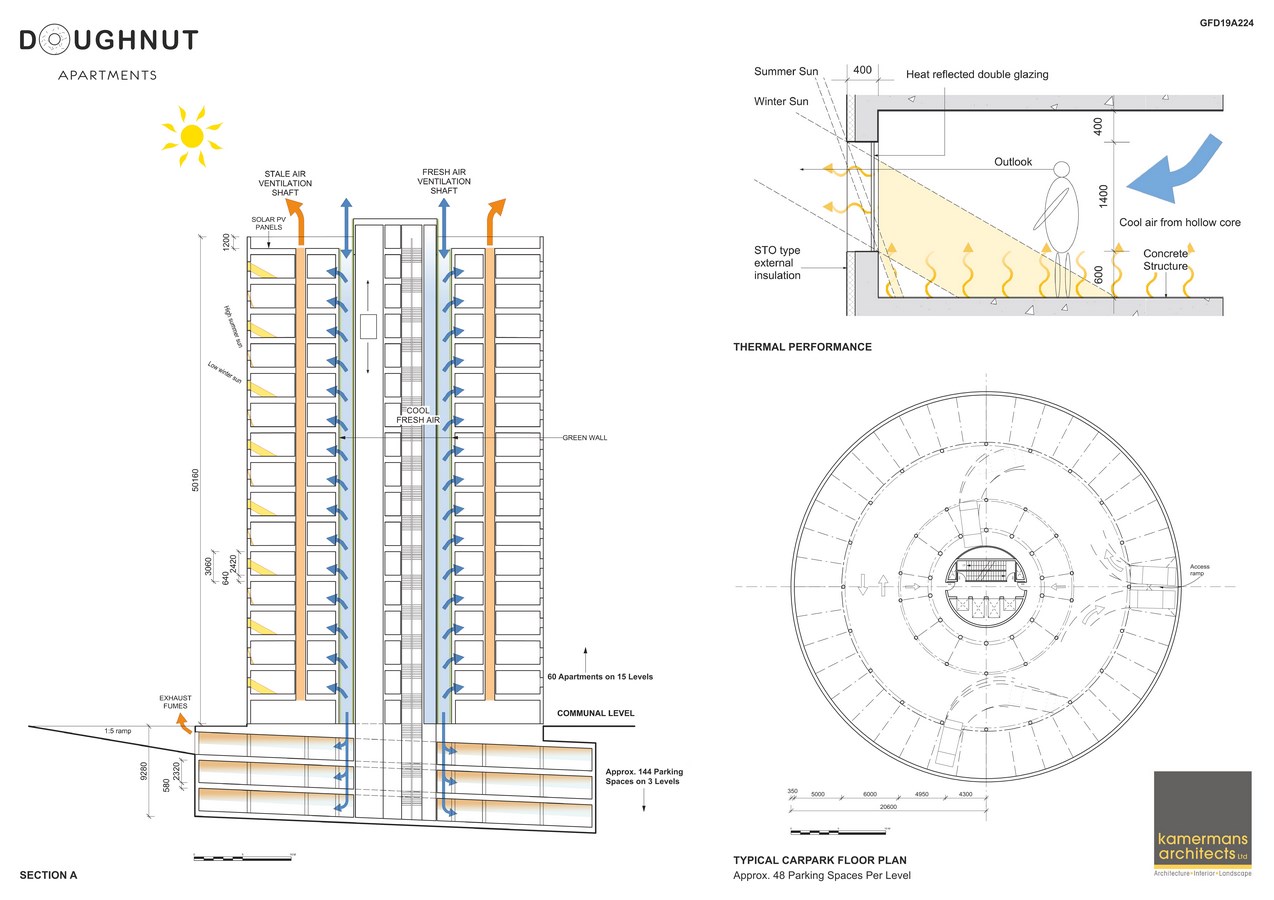
The round towers can be placed more closely to each other (higher density) than square or rectangular buildings as their elevations are smaller relative to their foot print.


